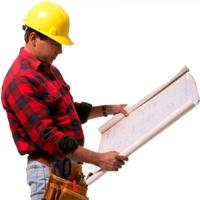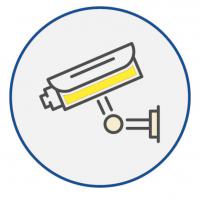How to Install a Wireless Alarm System
by Jessica Ackerman on Mar 2, 2010
Many important decisions must be made regarding keeping our homes and businesses safe from intruders. Although most television commercials and online advertisements recommend protecting yourself primarily from identity theft, which is indeed a growing problem worldwide, installing a wireless alarm system should also be a high priority. Much like finding an insurance policy that protects you in the event of a natural disaster or theft, preventing losses before they happen is an important way to ensure that you will not have precious and valuable possessions irretrievably lost.
A wireless alarm system is much easier to install than the more traditional alarms, especially since you do not have to hire an expert electrician to do it for you. This is usually a simple do-it-yourself job, and can often be completed in just a few hours or less. Although you will need to refer to the instructions provided by the manufacturer for the details of the installation, there are a few fundamentals that are fairly universal regarding the installation of a wireless alarm system.
First, you should start by deciding where the main controls should be placed. Keep this away from windows, and doors that allow a view inside when closed, as this will allow potential burglars to see when your alarm is set—and when it is not. Choose a central area that is close to a door, such as in a front hallway, and keep it out of the reach of small children.
If you have to choose the password, make sure that you write this down and store it in a safe location. A safe is an ideal place for information like this, but a lockbox will usually suffice. Never rely on your memory alone, as this can cause serious problems later in cases where you fail to remember the password.
Follow all appropriate steps to make sure that your main control is installed properly and anchored in place. Plugin the control system, and ensure that it can be set as needed. Do not move on to the next step until this step has been completed correctly, or you could cause the system to malfunction.
Next, choose the windows and doors that will be linked to the supporting systems. The best ideas are common entry points, such as a back door, windows that are easiest to access, garages, and similar locations. Whether there are separate units completely, or simple sensors, for secondary locations, make sure that each is installed according to the manufacturer's directions.
After you have installed each secondary or supporting unit/sensor, link all parts back to the primary unit using the manufacturers’ instructions. The most important thing to remember is that the system will not work if you do not set it. All of the alarms in the world are useless if the homeowner forgets to set the alarm at appropriate times, such as before bed, before leaving the home, and even when at home, especially when alone. Teach older children to set the alarm when they are home alone as well, to keep everyone safe at all hours of the day and night.
Popular Articles
Three Places to Spend Money on the Exterior of Your Home
When you have the exterior of your home remodeled, you are investing, time, energy and convenience into the project and you want to make sure that...
95742 Views
Homemade Headboards-Make an Upholstered or Wooden Headboard
Homemade headboards can add a lot of personality to any bedroom. They can be coordinated with existing furniture and room decor or they can be the...
74448 Views
When to Use a Brush, Roller or Sponge Brush
Brushes are a good choice for painting trim and woodwork. They are also useful for cutting in the edges around the top and bottom edges and corners...
71815 Views
Creating a Cottage Kitchen with Bead Board
Kitchen decor can range from modern and bold to elegant and elaborate by using strategic kitchen pieces. One of the most popular decorating trends...
52891 Views
Gas Fireplace Diagnostics and Troubleshooting
Follow these steps for diagnosing and troubleshooting Gas Fireplaces repairs. For the average DIYer, this may seem intimidating, depending on the...
30635 Views
Latest Articles
How Much Does It Cost To Take A Bath?
Plumbers know that a bath may seem like a relaxing luxury, but the real cost extends far beyond your water bill. The average soak uses 35 to 50...
on Apr 8, 2025
10 Concrete Patio Ideas on a Budget
A concrete patio can be a game-changer for your outdoor space. It is durable, versatile, and can be customized to fit your style. But what if you...
on Mar 25, 2025
Tips for Creating a Stunning Personalized Photo on Canvas
Order the unique beauty of a personalized photo on canvas and bring your memories to life. With a customized photo on canvas, you can transform...
on Mar 7, 2025
Best Areas to Buy Property in Singapore for Long-Term Growth
Singapore's real estate market remains one of the most stable and lucrative in the world. With limited land supply, strong governmental...
on Feb 18, 2025
Troubleshooting Excess Water in Your HVAC Secondary Condensate Drain Pan
When maintaining your air conditioning system, it is easy to overlook the condensate drain pan - until excess water starts pooling in places where...
on Jan 12, 2025
Featured Articles
What Type of Licensed Contractor Should You Hire?
on Feb 28, 2017
Hire Contractors / Estimates

Looking for a specialty project? There are many types of contractors available for your home improvement needs. Finding the right type of...
Sponsored Articles
Best Areas to Buy Property in Singapore for Long-Term Growth
on Feb 18, 2025
Real Estate / Finance

Singapore's real estate market remains one of the most stable and lucrative in the world. With limited land supply, strong governmental...
Actions
Top Categories
- Garden / Landscaping / Patio — 264
- Kitchen / Bathrooms — 240
- Real Estate / Finance — 203
- Appliance / Repair — 186
- Interior Design / Decor — 184
- HVAC / Air Conditioning — 148
- Cleaning / Maintenance — 144
- Improvements / Remodeling — 131
- Plumbing / Basements — 118
- Floors / Tile / Hardwood — 116
- Doors / Garages — 113
- Safety / Security — 113
Articles Archive
More DIY Articles
7 Things to Fix Before Putting Your Home on the Market
Selling your home is a stressful task, as homeowners don’t typically realize everything that’s involved. If you want to get the most money for your...
Maintaining Shopping Centers with Industrial Vacuum Cleaners
If your home is based in a metropolitan area, you will know how busy it gets in most shopping centers across the vicinity, especially during peak...
Tracing Roof Leaks
It is a beautiful sunny day, but it does not mean you can ignore the fact that your roof may be leaking. You may not know what to do when this...
Four Overlooked Aspects of Home Remodeling
You are decided to remodel your home. That Is great! There is so much to think about that you may overlook four vital aspects of remodeling. Paying...
5 Reasons to Use a Self Storage Unit While Renovating
Home renovations are a great way to update your space. There are all types of renovations, both large and small, that homeowners do in attempts to...

